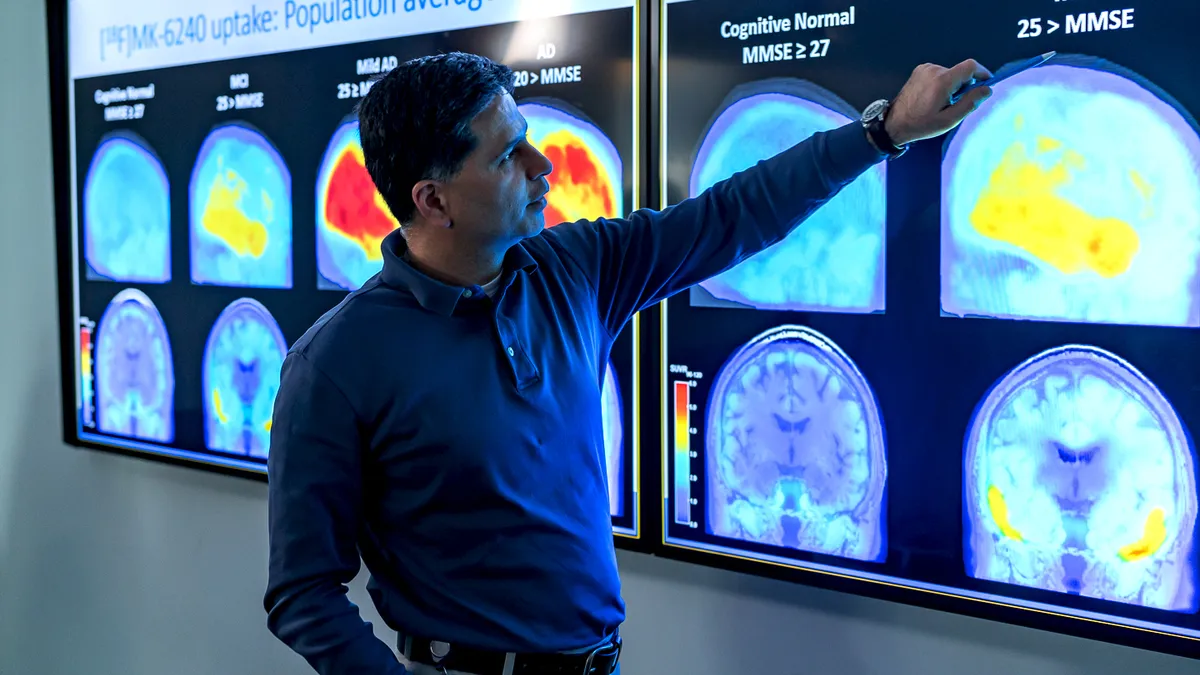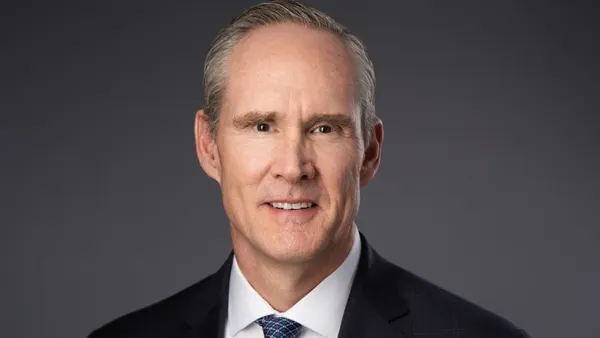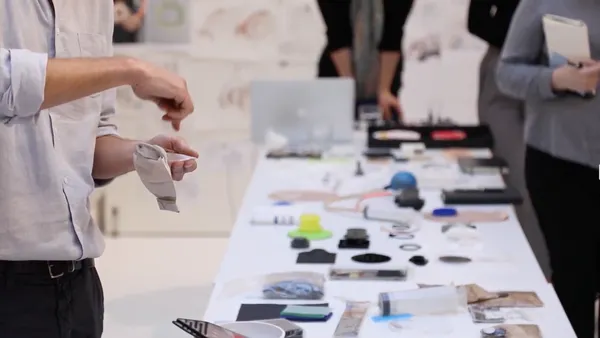Dive Brief:
- FDA on Friday authorized Neurolutions' device to help stroke patients regain movement in the arm, wrist and hand through use of a brain-computer interface to re-educate the muscles.
- The noninvasive IpsiHand system translates neural activity on the ipsilateral, or uninjured, side of the brain into data that directs arm and hand function on the patient's impaired side. Brain waves are recorded via EEG electrodes placed on the patient's head and analyzed on a tablet, then a signal is sent to a wireless robotic brace that moves the person's hand.
- FDA granted De Novo classification to the breakthrough-designated device based on data from Neurolutions' unblinded study of 40 patients, all of whom showed improved motor function over 12 weeks.
Device Insight:
Brain-computer interface devices to restore lost motor or sensory capabilities hold the promise of improving mobility and independence for patients suffering from paralysis.
Rapid advances in the development of device applications from discoveries in the field of neuroscience over the past decade prompted FDA in 2019 to issue draft guidance on BCI technology for patients with paralysis or amputation. The document, with recommendations for testing and study of implanted versions of the devices, followed a public workshop the agency held in 2014 to discuss the emerging technologies.
The field has attracted the interest of Tesla and SpaceX CEO Elon Musk, whose company Neuralink is working on a neural recording and data transmission device that so far has been implanted in pigs and a monkey. The device has received FDA breakthrough designation and could begin initial human trials as soon this year, Musk has said.
Another implantable BCI, a device from Palo Alto, California-based Synchron designed to enable patients with upper-limb paralysis to regain function, received FDA breakthrough status in August 2020.
Neurolutions' BCI device differs in that it is noninvasive, relying on a wireless EEG electrode headset and a battery-powered robotic exoskeleton worn over the hand, wrist and forearm to facilitate motor recovery in response to the patient's thoughts. The device will be available through prescription only, as part of rehabilitation therapy.
The technology was developed jointly by researchers at Washington University in St. Louis and the New York Department of Health's Wadsworth Center and licensed to Neurolutions in 2009.
About 795,000 people a year in the U.S. have a stroke, according to the Centers for Disease Control and Prevention.
"Today's authorization offers certain chronic stroke patients undergoing stroke rehabilitation an additional treatment option to help them move their hands and arms again and fills an unmet need for patients who may not have access to home-based stroke rehabilitation technologies," Christopher Loftus, acting director of the Office of Neurological and Physical Medicine Devices in FDA's Center for Devices and Radiological Health, said in a statement.













